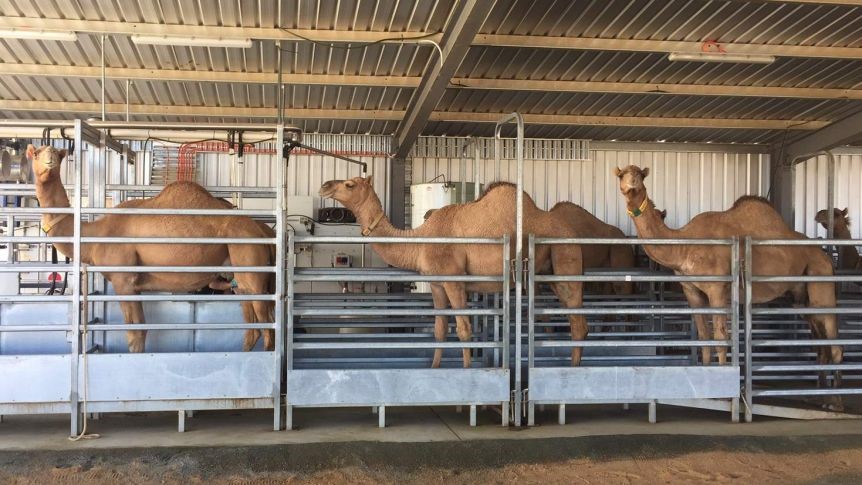- Knowledgebase
- Animals used for Food
- Dairy
- Camel dairy
Camel dairy
 Camels lining up to be milked
Camels lining up to be milked
An increasing number of camels caught in the wild are being diverted to camel dairies, an expanding industry that promotes itself as a healthier alternative to cows' milk products and a less wasteful alternative to aerial culling. Many camel dairies promote themselves as a sanctuary for camels, saving them from slaughter in the wild. However, it is commonplace for camel dairies to send their bulls (males) to slaughter due to their lack of economic viability, given they cannot produce milk.
In 2016 it was estimated that Australia produces roughly 50,000 litres of camel milk, with the industry's gross value estimated at $800,000 per annum.
Since then, the industry has grown significantly.
Most notably, in 2023, Good Earth Dairy, (a camel dairy operating in Western Australia), received a $4.4 million grant from the West Australian government.
With their $20 million project set for completion in 2026, Good Earth Dairy is forecast to be producing 60,000 litres of camel milk per day (21.9 million litres per year), and entering the infant formula market. Good Earth Dairy says they will be equipped to husband 3,000 camels, and forecast a potential revenue of $109 million per annum.
Like other camel dairies, Good Earth Dairy captures camels from the wild, and forces them into a life of commercial milk production, and ultimately slaughter.
To learn more about how camels are exploited in Australia head to the camel knowledgebase.


